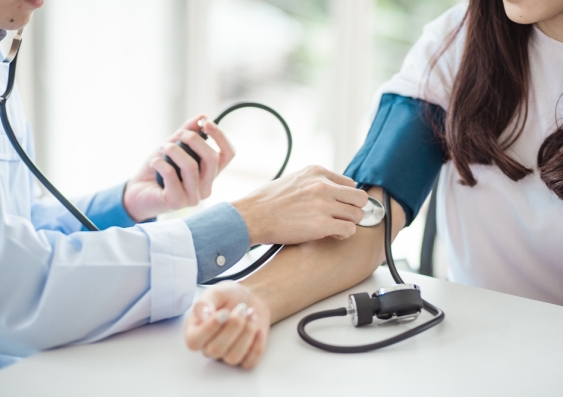High blood pressure rates: 1.2 billion people now living with hypertension
The number of people with high blood pressure has doubled over the past 30 years, a comprehensive analysis has shown.
The number of people with high blood pressure has doubled over the past 30 years, a comprehensive analysis has shown.

A major new study involving UNSW academics, published today in The Lancet, has analysed blood pressure measurements from more than 100 million people taken over three decades in 184 countries.
It’s the most comprehensive analysis of its kind, charting hypertension prevalence, diagnosis, treatment and control since 1990.
Over the past 30 years, the number of adults (aged 30-79 years) living with hypertension worldwide has doubled – rising from an estimated 331 million women and 317 million men in 1990 to 626 million women and 652 million men in 2019, with most of this increase occurring in low- and middle-income countries (LMICs).
High blood pressure is directly linked to more than 8.5 million deaths worldwide each year, and it’s the leading risk factor for stroke, ischaemic heart disease, other vascular diseases, and renal disease.
For this study, a team of researchers analysed data from 1201 population-representative studies, covering 99 per cent of the world’s population. The authors only used data from studies that had measured blood pressure to avoid biases in self-reported data. Hypertension was defined as having systolic blood pressure of 140 mm Hg or greater, diastolic blood pressure of 90 mm Hg or greater, or taking medication for high blood pressure.
The results reveal that despite being straightforward to diagnose and relatively easy to treat with low-cost drugs, nearly half of people with hypertension worldwide in 2019 were unaware of their condition; and more than half of women (53 per cent) and men (62 per cent) with the condition weren’t treated. Worldwide, blood pressure was controlled – in that medicines were effective in bringing blood pressure to normal ranges – in fewer than one in four women and one in five men with hypertension.
Professor Alta Schutte from UNSW Medicine & Health and The George Institute for Global Health is a co-author on the paper, and senior author of the 2020 International Society of Hypertension (ISH) Guidelines.
She says the trends outlined in this paper are concerning. “It seems like a losing battle, but when we note how the world took action against COVID-19, we should realise that raised blood pressure should be taken as seriously, given it contributes to approximately 30,000 deaths per day in the world.”
Many high-income countries – including Canada, Switzerland, the UK and Spain – report all-time low prevalence levels, but in low- and middle-income and central European countries such as Paraguay, Hungary, Poland, and Croatia hypertension rates remain high.
In Australia, one in every three adults has high blood pressure, according to the Australian Institute of Health and Welfare. But Prof. Schutte says one of the main challenges remains to create much better awareness: for example, year-on-year the May Measurement Month awareness campaign in Australia shows that only half of those with raised blood pressure are aware of it (because there are usually no symptoms), and hypertension cannot be treated when it is not detected.
Once detected, the next challenge is to treat high blood pressure effectively. Prof. Schutte says treatment inertia – where clinicians are hesitant to start or increase medication – is a major issue in achieving blood pressure control.
“This contributes to a major global problem – in Australia, for example, two out of three people with hypertension have uncontrolled blood pressure,” she says.
High-income and some middle-income countries have made impressive improvements in treatment and control of hypertension, including Canada, South Korea, Iceland, the USA, Costa Rica, and Germany. But Australia’s control rates have stagnated since 2011, and unlike other high-income countries, we’ve not seen improvements.
Improvements in some middle-income countries show that the expansion of universal health coverage and strengthening primary care have been instrumental in improving high blood pressure care and reducing the burden of this condition. Some of these countries, like Costa Rica, are achieving treatment and control rates as good as, or better than, many high-income countries – but there has been little change in most countries in sub-Saharan Africa and Oceania.
“Frustratingly, it remains easy and affordable to both measure blood pressure and to treat it effectively in large parts of the population, including in low- and middle-income countries,” Prof. Schutte says.
“Yet the numbers in low- and middle-income countries are sky-rocketing, with 82 per cent of all people with hypertension living in these regions.”
The authors call for best practice in detection, treatment, and control to be replicated across low- and middle-income countries.
“Low detection and treatment rates that persist in the world’s poorest nations, coupled with the rising number of people who have hypertension, will shift an increasing share of the burden of vascular and kidney diseases to sub-Saharan Africa, Oceania and south Asia,” says co-author Leanne Riley from the World Health Organisation (WHO), Switzerland. “Improving the capacity of these countries to detect and treat hypertension as part of primary health care and universal health coverage must be accelerated.”
Prof. Schutte says consensus in the field – supported by new guidelines released today by WHO – is now to start treatment with single pill combination therapy.
“Most patients need two drugs to lower blood pressure sufficiently. This is important to be implemented globally as a strategy to effectively reduce blood pressure as part of first-line therapy.”
The study was funded by WHO, and conducted by researchers from the Non-Communicable Disease Risk Factor Collaboration (NCD-RisC). Interactive maps and country-level data are available on NCD-RisC’s website.